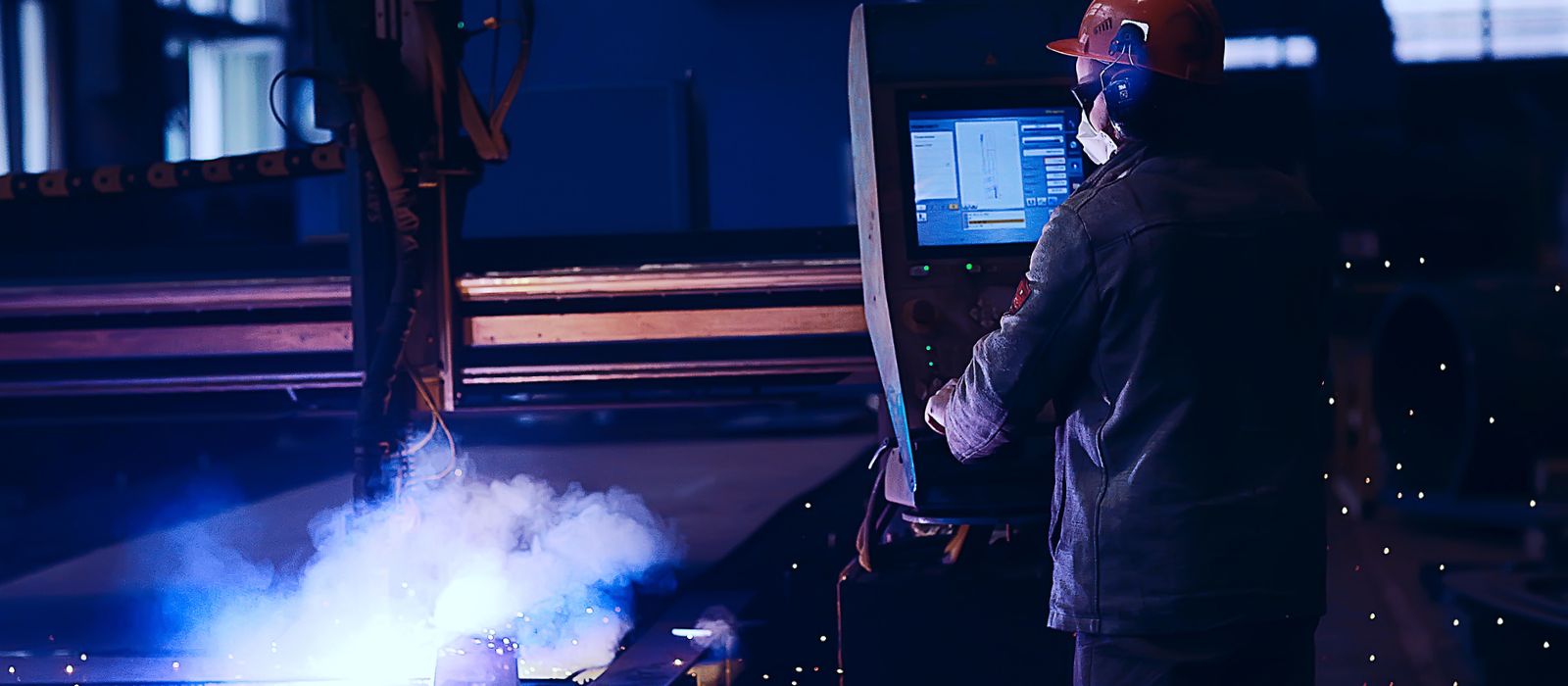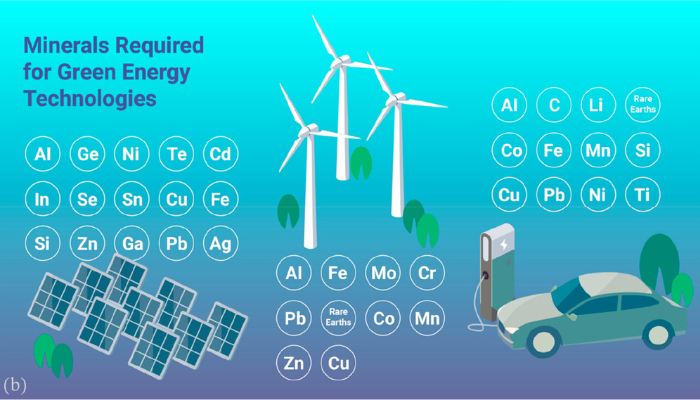Time to show our mettle!

This article is a summary based on the 2023 AusIMM Delprat Lecture Series, which was delivered by the author to AusIMM Branches around Australia.
The prologue
Like most students, I was unclear about what my future would be after high school. That was until I found a book in the library entitled Metals in the Service of Man [first published in 1944], which outlined the latest developments in metallurgy and the myriad ways in which these elements can be combined to produce useful materials. I was excited about the possibility of using my limited knowledge of science in practical ways. This was the start of my eventful and enjoyable journey in metallurgy.
We all have memories of key moments and experiences that shape our thinking and our lives. An important one for me came in 1978 when, as an undergraduate metallurgist, I visited a number of steelworks in Sheffield, England. Sheffield had been at the centre of metallurgical processing since the 1400s and played important roles in the development of the crucible steel process, Bessemer steelmaking, Hadfield steel and stainless steel. In 1850, Sheffield produced approximately 80% of steel in UK (Jones, 2017).
This was my first visit to a steel mill and I was looking forward to it. However, what I saw at one steel mill shocked me and made a lasting impression. The plant was hot rolling steel bar (initially 1200-1300oC) – the bar was initially ‘hand’ threaded, backwards and forwards through four parallel reduction stands by eight men, two for each set, through the rolls using hooks suspended on steel chains – no safety gear other than steel capped boots!
Even to me, this was clearly not only dangerous but highly inefficient. I asked when was the plant built? The answer was in 1916! I formed the view there and then that the British metallurgical industry was not investing in new technology and was in severe decline – I should seek a career elsewhere! The following summer I arranged to go to Australia for vacation experience, which turned out to be in the mineral processing plant at the South Mine in Broken Hill, which in fact was the original BHP open pit managed by Guillaume Daniel Delprat. Some years later, I returned to Australia and spent my career seeking ways in which to increase the efficiency and productivity of metallurgical processing.
Steel production in Sheffield has now all but disappeared, confirming the view I had formed as a result of my earlier visit there that ‘Standing still technologically, means going backwards!’
Where we are now?
The Australian mining industry prides itself as being at the forefront of technological developments. However, it is worthwhile looking at some interesting information from the last decade or so. The Reserve Bank of Australia data shows there has been a progressive and sharp decline in investment in the mining industry, starting in approximately 2012. Australian Mining Industry Business Expenditure on Research and Development (OECD), in real terms, decreased every year since 2008 from US$3.2b to US$0.7b in 2018. In contrast, over the same period China doubled its research and development (R&D) expenditure in the sector to US$6.5b and has retained its investment at this high level (all normalised to 2015 values). To advance Europe’s transition into a sustainable economy, EIT RawMaterials was established in 2015, with the objective of securing the supply of critical raw materials for the European industry by driving innovation, education, and entrepreneurship across European industrial ecosystems. Investment by government and industry has continued to expand with the subsequent formation of European Raw Materials Alliance (ERMA).
What is clear is that China’s investment in education and research has meant that, within the last two generations, China has significantly developed its R&D capability. For example, its researchers now dominate international research publications and technology developments in extractive metallurgy. Also over the same period, technological developments in materials and manufacturing have substantially changed, and we face the major challenges and emerging technological developments associated with:
- climate change and decarburisation of metal production
- increased demand for metals associated with electrification of transportation and renewable energy generation and storage, eg increased Cu, Ni, Co, Li, platinum group metals, Rare Earths…
- new applications for other non-ferrous metals, eg new advanced materials and devices.

Figure 1. Examples of the critical metals (minerals) required for manufacture of renewable energy technologies (Raabe, 2023. Adapted from the original and used under Licence CC-BY 4.0).
Meanwhile, Australian industry has abandoned initial strategies, identified in its own ‘Back from the Brink’ report (1998), to address its skills shortage in geosciences, mining and extractive metallurgy and its support for a sound knowledge base in Australia, seemingly preferring short-term financial gain over long-term strategic strength. Based on these statistics and evidence, I would argue that Australia and the Australian minerals industry has not been adequately preparing for the future. After a decade of inaction, Australia has belatedly woken up to the technological developments taking place in other parts of the world with the publication in 2023 of the Federal and Queensland Government critical minerals strategies.
What can we do?
It is clear that Australia needs increased investment in metallurgical processing if we are to play our part in the global challenges we are facing. We need to
- Support knowledge development and innovation
- Develop a workforce for the future
From a study of industrial outcomes, Taalbi (2017) identified a number of different types of R&D and innovative activities. These categories are illustrated below with some examples of previous Australian metallurgical innovations, which serve to demonstrate that Australia does not have to wait for the rest of the world.
Making the most of what you have
The innovations in this instance involve using existing plant to improve technical and economic outcomes, eg through optimising existing processes and operations. This is the type of innovation most familiar to professionals working in the industry, but successful implementation requires both knowledge and understanding of complex processes.
Intractable problems
These innovations are developed as a response to economic, environmental, organisational or techno-economic roadblocks. A clear example was that faced by BHP and Delprat – no technology was available to recover zinc sulphide from mine process wastes at Broken Hill. The development of the Potter-Delprat flotation technology and mineral flotation represented a step change in technical capability. Note it took a number of prototypes and adjustments to process conditions to obtain a commercially viable process. The details of the process are very different to those used today (Clark et al, 2006).
Technological opportunities
Innovation is possible with improved understanding of existing processes and scientific advances. Metallurgical examples include improved flotation technologies, eg Jameson and the use of selective flotation reagents (Hassanzadeh, 2022); the development and application of fine grinding technologies, which make it possible to prepare mineral concentrates from finely disseminated ores (eg the use of the IsaMill to process McArthur River Pb/Zn sulphide ore; Top Submerged Lance (TSL) technologies, SIROSMELT, Ausmelt, IsaSmelt, IsaConvert developed in Australia are now used in non-ferrous metal smelting, recycling and waste processing across the globe.
Market opportunities
As manufacturing technologies change and new materials are required, innovative solutions can be developed to address customer requirements or an unexploited market niche. A recent example is that of a hydrometallurgical process for the preparation of Ni-Co precursors for Li battery cathode materials by selective leaching and precipitation by PureBattery Technologies (2021).
Fundamental and blue sky research
Fundamental research often appears to have no immediate practical application. However, the results of these types of studies can be integrated into innovative tools and technologies. The measurements of fundamental physical and chemical properties of elements and solutions have laid the foundation for the development of advanced computer-based tools that we use today to optimise process design and operation in metallurgical plants. Examples include the quantitative determination of mineral compositions, liberation and associations in ores using computerised electron microscope (SEM, EPMA) and metallographic techniques, eg QEMSCAN, MLA. The chemistry of non-ideal solid and liquid solutions and chemical processes can be described by advanced chemical thermodynamic databases and models incorporated into computer software programs, eg MPE, FactSage. These tools enable chemically complex, multi-phase systems to be accurately described and predicted, eg heat balances, phase equilibria, elemental distributions between phases and process streams, process outcomes.
I am sure that all professionals can identify some way things can be done better and more efficiently in particular plants – we can therefore all contribute to innovation in our own ways.
We can also see that innovation is more than just selecting the technologies of the day – more than supporting projects with payback times of less than a year. Long-term sustainability requires strategic thinking, planning and commitment.
Innovations do not make themselves. Investment in R&D isn’t just about machines and processes – it is also about investing in people. To be successful we need professionals with:
- fundamental and technical knowledge
- skills
- experience.
We need to do more to lay the foundations for innovation by providing:
- opportunities
- encouragement
- supportive environments for innovation.
To be frank, the onus is on the industry to step up its efforts in developing the metallurgy workforce for the future. This involves:
- actively helping to attract and inspire young people to take up a career in metallurgy
- developing more career pathways in industrial R&D to retain talented professionals
- urgently finding ways of sustaining core metallurgy specialist teaching and research capabilities at our universities.
Industry can boost enrolments in metallurgical engineering by:
- offering vacation work and metallurgy work experience to early year (first and second year) undergraduate students to show them the challenges and opportunities, and encourage them to take up studies in this discipline. Invest early – this is a critical period when students decide their career directions.
- providing scholarships.
- promoting and demonstrating the key role of metallurgical processing in enabling the transformation to sustainability.
Reflections and actions
If Australia is to continue to be a leader in the supply of metals, we need to:
- invest in the future
- develop, adopt and implement new technologies
- reconnect with downstream processing and the needs of modern manufacturing industries
- develop and sustain a trained and motivated workforce
- educate young people and make them aware of the key role of metallurgy in building a sustainable future.
The metallurgical industry is entering an exciting new phase of development and is playing a key role in enabling the transition to sustainable technologically-based societies. We are not all Guillaume Delprat, but we all have something different to offer as professionals working in this field. It’s time to show your mettle!
References
ABS, Australian Bureau of Statistics, Research and Experimental Development, Businesses, https://www.abs.gov.au/statistics/industry/technology-and-innovation/research-and-experimental-development-businesses-australia/latest-release
Australian Government Critical Minerals Strategy 2023–2030https://industry.gov.au/CriticalMineralsStrategy
Clark M.E., Brake I., Huls B.J., Smith B.E., Yu M. (2006) Creating value through application of flotation science and technology, Minerals Engineering 19, 758–765.
Hassanzadeh et al., (2022) Technological assessments on recent developments in fine and coarse particle flotation systems, Minerals Engineering, Vol. 180, April, 107509
Jones R. (2017) How Sheffield became Steel City: what local history can teach us about innovation http://www.softmachines.org/wordpress/?p=2057
EIT Raw Materials https://eitrawmaterials.eu/
Mawson P. (1958) A Vision of Steel - The life of GD Delprat. https://dacc.net.au/wp-content/uploads/2023/01/1958-A-vision-of-steel-Biography-by-Paquita-Mawson-foreword-by-Robert-Menzies-1.pdf
MCA (1998) Back from the Brink – Reshaping Minerals Tertiary Education, Minerals Council of Australia
Osborne G. (1981) Australian Dictionary of Biography, vol. 8, 1981. https://adb.anu.edu.au/biography/delprat-guillaume-daniel-5947
Reserve Bank of Australia, Australian Economy and Financial Markets Chart Pack https://www.rba.gov.au/chart-pack/
Queensland Government Critical Minerals Strategy (2023) https://www.resources.qld.gov.au/__data/assets/pdf_file/0005/1726430/critical-minerals-strategy.pdf
Raabe D (2023) The Materials Science behind Sustainable Metals and Alloys, Chemical Reviews, 123(5), 2436-2608.
Street A. and Alexander W., Metals in the Service of Man, Penguin Science, eds. 1 - 11.
Taalbi J. (2017) What drives innovation? Evidence from economic history, Research Policy, 46(8), 1437-1453.
Western Australia Government Future Battery and Critical Minerals Industries Strategy November 2020 – November 2022. https://www.wa.gov.au/government/publications/western-australias-future-battery-industry-strategy